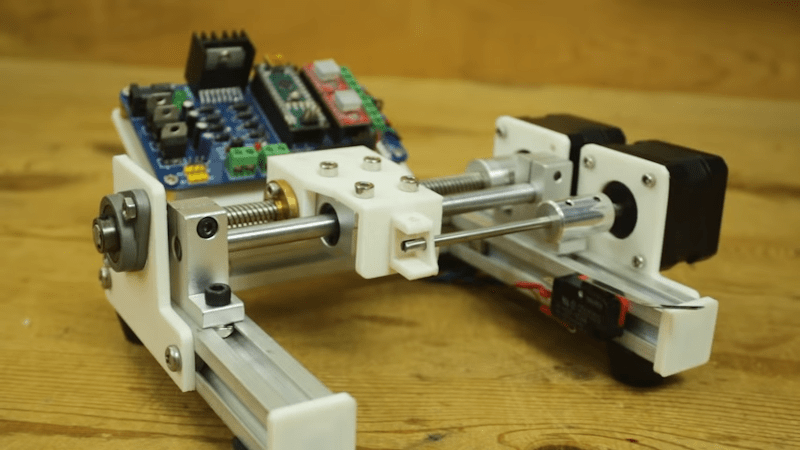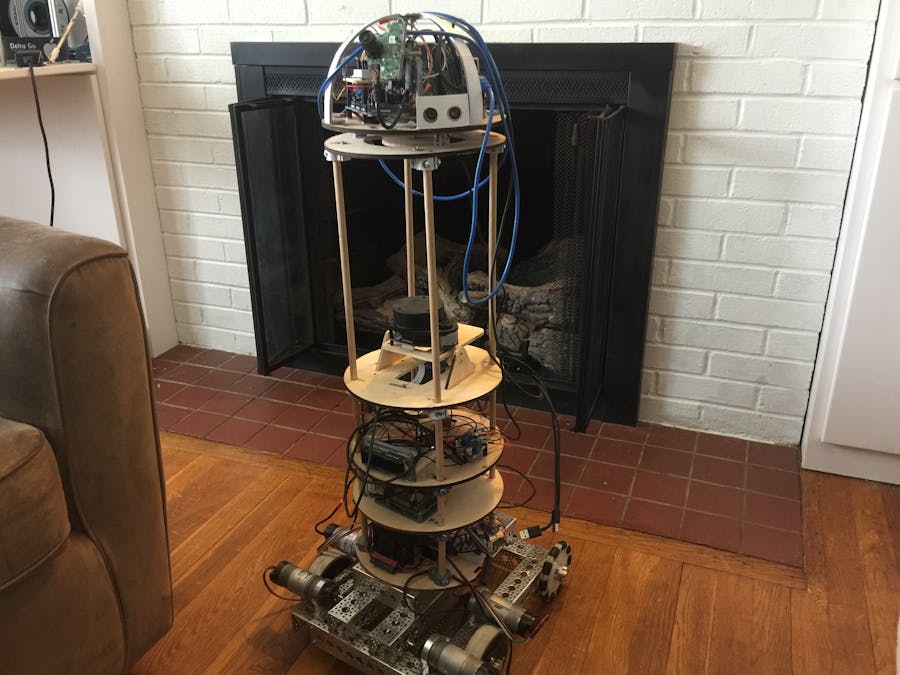I have designed yet another cycloidal drive! This one is different, though. Unlike most of my projects, it is strictly 3D printed. No CNC required. The cycloidal mechanism is also “inside-out”. The cycloidal discs do not rotate, they only wobble, transmitting rotation to the output. This was also designed to maybe be used in a modular robot arm. It’s also a 25:1 gear reduction.
Robotics
Coil Winding Machine Makes it Easy
[Mr Innovative] needed to wind some coils, and decided to make a machine to do the work. Making such machines has become a lot easier over the years. There was a time when we might probably have had to hack an old printer or scanner to get linear rods and stepper motors. Now, thanks to widespread 3D printing, we can order parts like that from lots of places. The 3D printing helps, too, to fabricate all the little custom widgets you need to put something like that together.

This Tiny 3D-Printed Dump Truck Is Remotely Controlled with an Arduino
Most of us have some experience with RC vehicles — at least the cheap toy variety. But those are just the start of what is available and the RC hobby is full of really impressive vehicles that put those toys to shame. Some are meant for speed and can outrun your Honda Civic. But others are designed to replicate their full-size counterparts as faithfully as possible. For example, it isn’t uncommon to see RC airplanes with accurate interiors. Redditor EnosCamare wanted to try their hand at a replica and built this adorable 3D-printed dump truck that is remotely controlled with an Arduino.

RaspberryPi Assisted ‘Anti-Mosquito Laser Turret’ Has Been Developed
Russian computer scientist named Ildar Rakhmatulin produced a mosquito laser using Raspberry Pi and laser. An expert working on brain-computer interfaces at Russia’s South Ural State University claims that with his invention, he neutralized two mosquitoes per second.
” Raspberry Pi to kill mosquitoes laser ” online as a non-peer reviewed preprint in January. In it, he lays out a plan to snipe mosquitoes out of the air using a Raspberry Pi equipped with a Pi camera, a galvanometer that detects electrical currents, and a commercially-available laser pointer that’s 450 nanometers and one wavelength—powerful enough to kill a mosquito and blind someone looking directly at it, but not enough to burn skin.

This Metal-Munching Robot Can Navigate Autonomously Without a Brain
Researchers from University of Pennsylvania have developed a robot that feeds on metal and can navigate autonomously without a brain.
The single most important resource in the future will, without a doubt, be energy. Humanity’s energy needs have increased dramatically over the past couple of centuries and that trend will absolutely continue. We’re already experiencing an energy supply problem, as evidenced by our continuing reliance on nonrenewable fossil fuels. Energy storage is also becoming more of an issue as we attempt to move away from those fossil fuels. An electric car, for example, needs a heavy battery. More storage capacity equals more weight, which requires more energy to move — a catch-22. That problem extends to robots, which is why a team of researchers have developed a robot that feeds on metal and can navigate autonomously without a brain.

Automatic pool stick vs. strangers
An automatic pool playing robot – how hard could it be? Turns out harder than I thought. It took me quite a while to work through all the difficulties of this project but when it all finally came together is so worth it. To my surprise the most interesting aspect of this project is using the cue to play real games of pool over the internet. Let me know if you think twitch plays billiards would be worthwhile…
3D-printed mobile robot based on the Arduino Due
Although an Arduino can be a great way to provide computing power for a mobile robot, you’ll need a variety of other electronics and mechanical components to get it going. In his write-up, computer science student Niels Post outlines how he constructed a robotic platform that travels via two stepper motors, along with casters to keep it upright. Its round chassis is 3D-printed and runs on three rechargeable 18650 batteries.

This bin will sort your trash and recyclables automatically
Often you might see a recycling bin next to a trash can, and notice that someone else has thrown their waste into the wrong container. To help with this conundrum, the team of Shalin Jain, Viraj Singh, Edward Chen, and Joshua Kim created a double-sided container that sorts things automatically.
Their device, dubbed “Splash,” takes a webcam image of the item presented to it, analyzes this with a Python script and the Azure Custom Vision API, and reports back to an Arduino Uno controller with its findings. Depending on the results, the Arduino then uses a driver board and motor to properly position a flap, directing refuse into in the correct bin.

Brainwaves Fly a Drone
Drones are fun to fly, and it’s possible to do limited flying using brainwaves. The headset senses my brainwaves and transmits them to a small computer. When I increase my attention level, the computer converts the signals and passes them to the drone’s controller, which I have connected to the computer. When I relax my mind, the drone lands.

Autonomous Home Robot to Help Around the House!
A low-cost home robot that can do tasks around the house.
I have been developing an autonomous home-assistant robot. This robot was entirely designed, created, and built from scratch with no use of a kit or directions. In the process of creating this, I taught myself how to use ROS, Python, C, HTML, CSS, OpenCV, and other complex systems/languages.
The robot is able to travel around the house independently using Simultaneous Localization and Mapping (SLAM) with Robot Operating System (ROS) for navigation. It knows where to go based on pre-set waypoints. This machine is a prototype of a low-cost robotic assistant for the average person to use in their home. It combines facial recognition, navigation, and a web-control page, as well as other easy-control options such as gesture-control, Wii remote, and even hand-guided. The robot uses many Proportional Integral Derivative (PID) control systems which allows the robot to self-balance, making it more user-friendly, lighter weight, and maneuverable.

